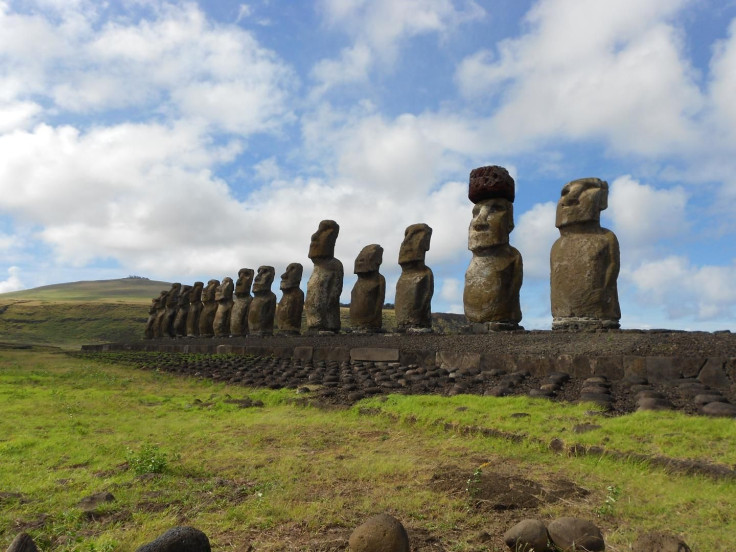How Easter Island Heads Got Their Massive Hats: Ropes And Ramps

The stone heads on Rapa Nui, or Easter Island, are as massive as they are mysterious, and researchers have long sought to establish the meaning they held to the isolated people who erected them. Significant speculation has also gone into establishing exactly how those rock statues were created, and how they were given their stone hats, which are distinct from the heads themselves.
A group of researchers from Pennsylvania State University and Binghamton University, State University of New York, have proposed a solution for how those stone hats — each weighing several tons — were moved to the tops of the stone heads by the people of Rapa Nui hundreds of years ago, in the absence of any modern technological tools and given the small number of the remote island’s inhabitants. They were likely transported using ropes and ramps, and a technique called parbuckling.
“The number of possible pukao emplacement methods is limited only by the human imagination. Examples of past ideas for pukao transport include sliding the pukao up a wooden ramp or gradually building a pile of stones beneath the pukao. The challenge is to move beyond merely possible transport methods and to identify a transport scenario that is consistent with variation in the archaeological record,” Sean Hixon, lead author of a paper on the subject and current graduate student at Penn State University, said in a statement Monday.

The head statues are called moai and the hats, made of a different stone, are called pukao. Not all moai have pukao, and for their study, the researchers looked at 3D models of 50 pukao spread across the Pacific island, as well as 13 red scoria (the material of which the pukao are made) cylinders at a site called Puna Pau, the island’s quarry where the pukao were made.
“The answer, like that of our findings with the moai, show that Rapa Nui people were remarkably ingenious and found solutions that required the fewest resources and smallest effort to achieve their goals. In parbuckling, a line would have been wrapped around the pukao cylinder, and then people would have pulled the rope from the top of the platform," said Lipo. "This approach minimizes the effort needed to roll the statue up the ramp. Like the way in which the statues were transported, parbuckling was a simple and elegant solution that required minimum resources and effort,” Carl Lipo, a professor of anthropology at Binghamton and coauthor of the study, explained.

The researchers also extended their findings and hypotheses to comment on the general interaction between the Rapa Nui people and their resources. It is theorized by some that the islanders prospered at first, but then, as their numbers grew, they couldn’t manage the limited resources they had, and thus met their end.
“We conclude that activities of pukao production and transport did not require oversight by a centralized political authority, nor do they support notions of a large population that collapsed with ‘ecological suicide’ on Rapa Nui,” they wrote in the paper’s abstract.
Titled “The colossal hats (pukao) of monumental statues on Rapa Nui (Easter Island, Chile): Analyses of pukao variability, transport, and emplacement,” the paper was published online Thursday in the Journal of Archaeological Science.
© Copyright IBTimes 2024. All rights reserved.





















